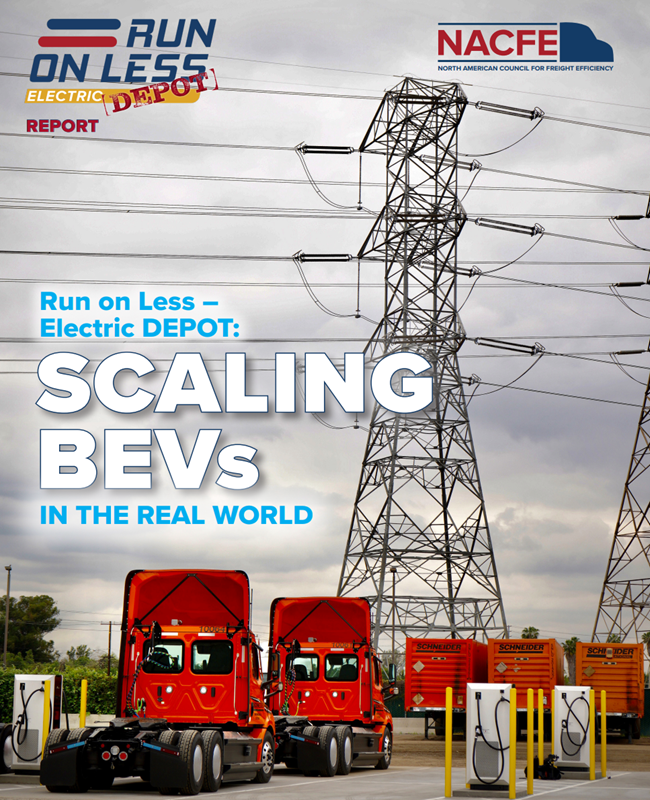NACFE tracked 22 battery electric vehicles (BEVs) from Class 2b through Class 8 operating out of 10 depots in New York, British Columbia and California.
The fleet depots and vehicles in RoL-E DEPOT were:
- Frito Lay operating two Ford E-Transits in Queens, New York.
- OK Produce operating an Orange EV e-TRIEVER and a Freightliner eCascadia in Fresno, California.
- Penske operating a Ford E-Transit, a Freightliner eCascadia, a GM BrightDrop ZEVO 600, and an International eMV in Ontario, California.
- PepsiCo operating three Tesla Semis in Sacramento, California.
- Performance Team Logistics operating two Volvo VNRs in Commerce, California.
- Purolator operating a Ford E-Transit and a Motiv EPIC in Richmond, British Columbia, Canada.
- Schneider operating two Freightliner eCascadias in South El Monte, California.
- UPS operating a Freightliner eCascadia and a Freightliner Custom Chassis Corporation MT50e in Compton, California.
- US Foods operating two Freightliner eCascadias in La Mirada, California.
- WattEV operating a BYD 8TT and a Nikola Tre BEV in Long Beach, California.
NACFE evaluated each of the depot operations in RoL-E DEPOT, estimating the power requirements if all the trucks operating at the facility transitioned to BEVs. This process inherently has many assumptions, but it serves as a good “ballpark” estimate. If 100% of the approximately 850 trucks of different classes at the 10 sites transitioned to BEVs, they would need 214 MWh of energy per day.
NACFE concludes that electrifying the 850 trucks at the 10 fleet depots in the Run represents a relatively small ~214 MWh/year growth in electricity demand in networks handling annual electricity on the scale of GWh and TWh.
More About this Resource
Date: July 1, 2024
Type: Research Reports
Tags: Electric Trucks
Countries: None
States: None
